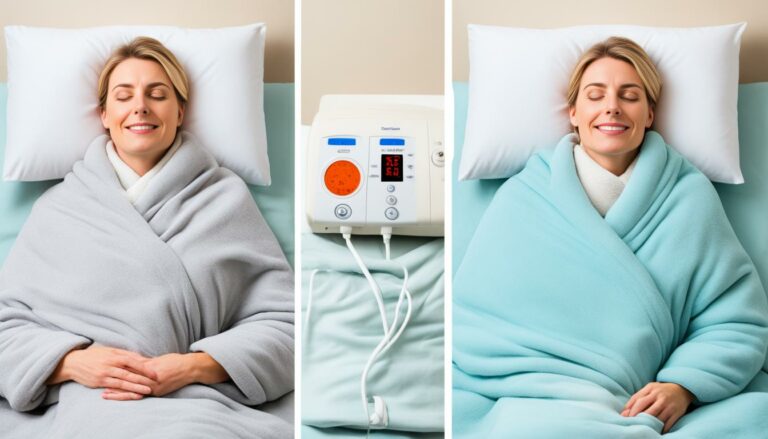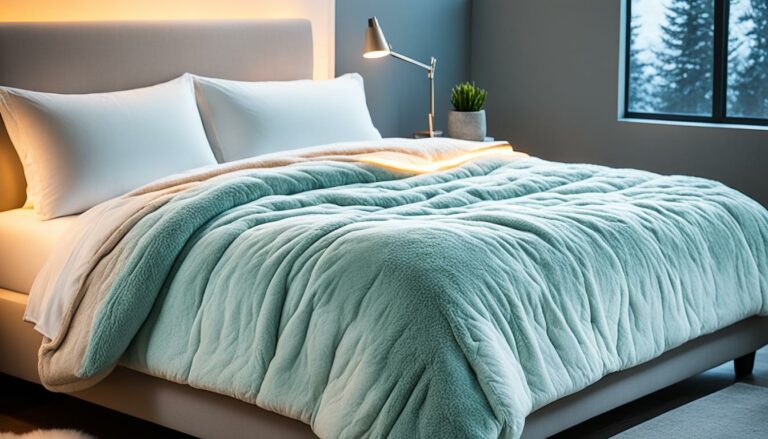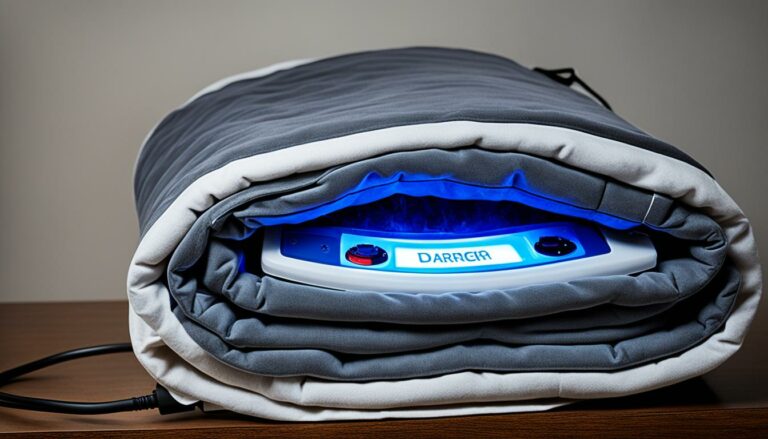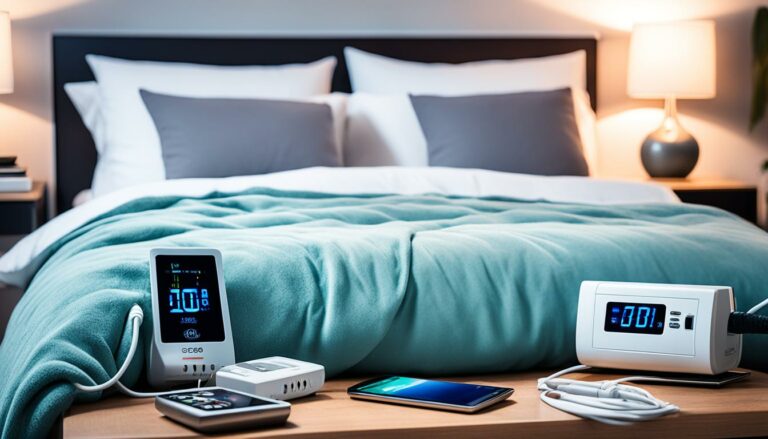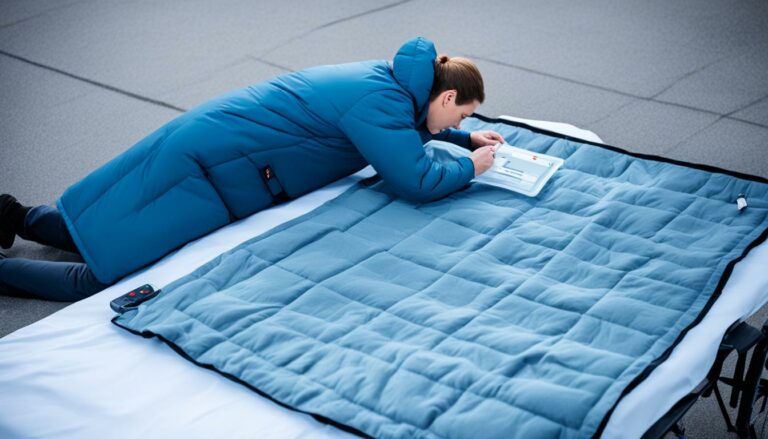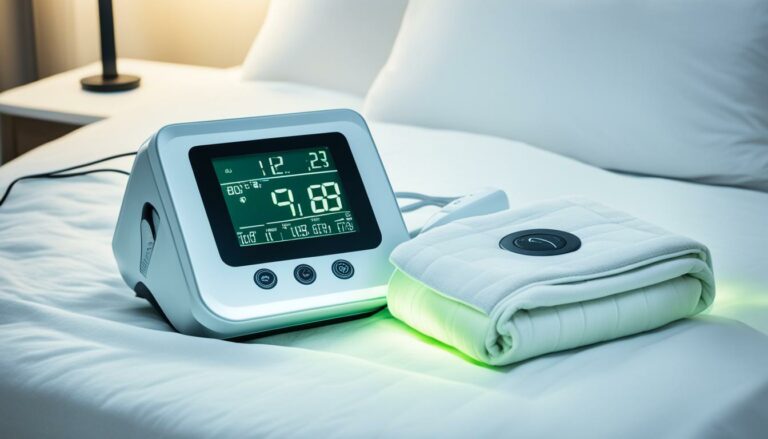Understanding How Heated Blankets Work
Eric Christie stands as a luminary in the bedding industry, with a career spanning nearly four decades since the early 1980s. His journey through the world of bedding has seen him wear many hats – a manufacturer, designer, and retailer, showcasing his versatility and expertise in Read more...
pillowsandbedsheets.com and its partners may earn a commission if you purchase a product through one of our links
Heated blankets are a popular choice for staying warm and cozy during chilly nights. But have you ever wondered how they actually work? In this article, we’ll explore the technology behind heated blankets, the benefits they offer, and how to choose the right one for your needs.
Heated blankets work by using small wires or coils embedded in the fabric that carry heat and warm up the blanket. The most common type of heated blanket is the electric blanket, which plugs into the wall and draws electricity to heat the wires. This heat is then transferred to the fabric, providing warmth and comfort to the user. Another type of heated blanket is the self-heating blanket, which uses batteries to generate heat.
There are different types of heated blankets available to suit various preferences and needs. Underblankets, overblankets, throws, and duvets are all popular options. Choosing the right heated blanket involves considering factors like size, temperature control, power source, and budget.
Now that you have a basic understanding of how heated blankets work, let’s explore the benefits they offer. From improved sleep quality to pain relief, heated blankets can enhance your comfort and well-being.
Key Takeaways:
- Heated blankets use small wires or coils to carry heat and warm up the blanket.
- Electric blankets plug into the wall and draw electricity to heat the wires.
- Self-heating blankets use batteries to generate heat.
- There are different types of heated blankets, including underblankets, overblankets, throws, and duvets.
- Choosing the right heated blanket involves considering factors like size, temperature control, power source, and budget.
Now that you know how heated blankets work and their benefits, you can make an informed decision when choosing the right one for yourself. Stay warm, cozy, and comfortable all winter long!
The Benefits of Heated Blankets
Heated blankets offer numerous benefits to users. They can improve sleep quality, provide pain relief, increase comfort, and reduce stress. Let’s explore these advantages in detail:
1. Improved Sleep Quality
A heated blanket can work wonders for your sleep. The gentle warmth generated by the blanket helps you fall asleep faster and promotes a deeper and more restful sleep. As the heat envelops your body, your muscles relax, releasing tension and stress. This calming effect allows you to enjoy a peaceful night’s sleep, waking up feeling refreshed and rejuvenated.
2. Pain Relief
If you struggle with muscle aches, arthritis, or back pain, a heated blanket can provide much-needed relief. The heat helps increase blood flow to the affected area, reducing inflammation and soothing sore muscles or joints. The targeted warmth from the blanket acts as a natural pain reliever, easing discomfort and improving your overall well-being.
3. Increased Comfort
During cold winter nights, heated blankets become your cozy companions. They provide a consistent and comforting source of warmth, allowing you to snuggle up and stay cozy even when the temperature drops. The soothing heat instantly wraps you in a cocoon of comfort, making your evenings more enjoyable and relaxing.
4. Reduced Stress
Stress and anxiety can take a toll on your physical and mental well-being. Heated blankets can help alleviate stress by creating a warm and soothing environment. The gentle heat promotes relaxation, calming your mind and body. Wrapping yourself in a heated blanket after a long day can be a simple yet effective way to unwind and melt away the day’s stress.
Overall, heated blankets offer a range of benefits, from improving sleep quality to providing pain relief and reducing stress. Investing in a high-quality heated blanket can enhance your comfort and well-being, keeping you cozy and relaxed throughout the year.
Choosing the Right Heated Blanket
When it comes to selecting the perfect heated blanket, there are several key factors you should consider to ensure ultimate warmth and comfort. By evaluating the type of blanket, size, temperature control options, power source, and your budget, you can make an informed decision that meets your specific needs.
1. Types of Heated Blankets
First and foremost, determine the type of heated blanket that suits your preferences. There are various options available, including:
- Underblankets: These are placed beneath your fitted sheet and provide warmth from underneath.
- Overblankets: These are placed over your top sheet and provide warmth from above.
- Throws: These smaller blankets are perfect for snuggling up on the couch or in your favorite armchair.
- Duvets: These heated blankets are designed to be used as a regular duvet cover for your bed.
2. Size Matters
Before making a purchase, measure your bed to ensure the heated blanket fits properly. Whether you have a twin, full, queen, or king-size bed, there is a heated blanket available to match your specific requirements.
3. Temperature Control Options
Adjustable temperature settings are a crucial feature of any heated blanket. Look for a blanket that offers various heat levels, allowing you to find the perfect warmth for your comfort. Some advanced models even have programmable timers for automatic shut-off during the night.
4. Power Source Considerations
Decide whether you prefer an electric blanket that requires a power cord or a self-heating blanket that operates on batteries. Electric blankets offer constant warmth, while self-heating blankets provide greater mobility, making them convenient for outdoor activities such as camping.
5. Budget-Friendly Choices
While heated blankets come in a range of prices, it’s essential to determine your budget before making a decision. Consider the features that are most important to you in terms of comfort and convenience and find a heated blanket that fits within your price range.
By taking these factors into account, you can confidently choose the right heated blanket that caters to your specific needs, ensuring cozy nights and restful sleep.
The Technology Behind Heated Blankets
Heated blankets are not just a simple way to stay warm; they utilize innovative technology to provide comfort and coziness. Understanding the mechanism behind heated blankets can give you a deeper appreciation for these modern marvels.
The most common technology used in heated blankets involves insulated wires or heating elements that are embedded within the fabric. These wires or elements are designed to generate heat when the blanket is plugged into a power source or the batteries are activated.
The secret to regulating the heat output lies in the temperature control unit, which is strategically placed between the blanket and the power source. This control unit regulates the flow of current to the heating elements, ensuring the desired temperature is maintained.
Modern advancements have introduced carbon fiber elements as an alternative to traditional woven wires. These carbon fiber elements offer several advantages, including being less bulky and more discreet. When activated, these elements rapidly heat up, providing instant warmth to the user.
The technology behind heated blankets is continuously evolving, with manufacturers striving to enhance the user experience while prioritizing safety and efficiency. By understanding the technology at work, you can fully enjoy the benefits of heated blankets and revel in their comforting embrace.
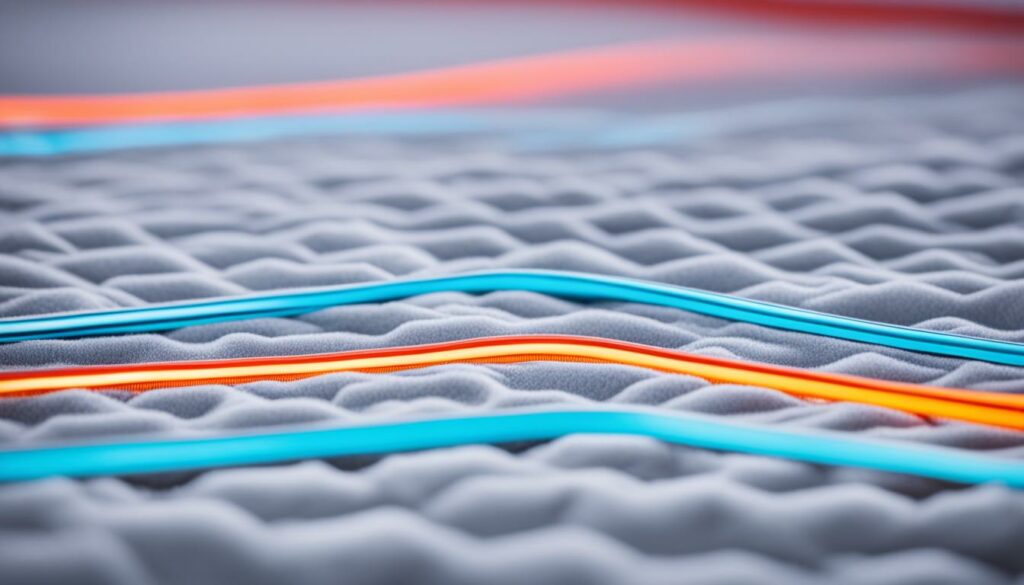
So, how exactly do heated blankets work? Let’s take a closer look at the mechanism behind them. Researchers and engineers have developed a variety of innovative technologies to bring you the warmth and comfort you desire. The most common technology used in heated blankets is the integration of insulated wires or heating elements woven into the fabric. These wires or elements heat up when the blanket is plugged into a power source or activated through batteries. The temperature control unit is the key component that regulates the flow of current to the heating elements, enabling you to adjust the level of heat according to your preference. More recently, carbon fiber elements have emerged as an alternative to traditional wires. These elements serve as a lightweight and discreet source of heat, ensuring maximum comfort without sacrificing style. Whether you prefer the classic warmth of woven wires or the modern elegance of carbon fiber elements, the technology behind heated blankets works tirelessly to keep you cozy and content.
Safety Features and Energy Efficiency of Heated Blankets
Heated blankets are a cozy and convenient way to stay warm during chilly nights. However, it’s important to prioritize safety when using these comforting bedding accessories. That’s why heated blankets are designed with built-in safety features to ensure your well-being and prevent accidents.
One essential safety feature of heated blankets is the automatic shutoff mechanism. This feature is designed to turn off the blanket after a specific period of time, preventing overheating and potential fire hazards. Always follow the manufacturer’s instructions on the recommended usage and duration for your specific blanket model to ensure its safe operation.
When using an electric blanket, it’s crucial to take additional safety precautions. Regularly check the wires and fabric for any signs of damage or fraying, as this can increase the risk of electrical shocks or fires. Avoid folding or creasing the blanket while in use to prevent wire damage. And remember to unplug the blanket when not in use, especially before going to bed or leaving the house.
In addition to safety, energy efficiency is another important consideration when choosing a heated blanket. Fortunately, heated blankets are known for their energy-efficient operation. On average, they consume about two cents per hour of electricity, making them a cost-effective way to stay warm. However, electricity consumption can vary based on heat settings and usage. To further enhance energy efficiency, opt for a heated blanket with energy-saving features like low voltage or programmable heat settings.
By understanding the safety features and energy efficiency of heated blankets, you can confidently enjoy their warmth and comfort while keeping yourself and your loved ones safe. Remember to prioritize safety, follow the manufacturer’s guidelines, and choose an energy-efficient model to make the most of these cozy bedding accessories.
FAQ
How do heated blankets work?
Heated blankets work by using small wires or coils embedded in the fabric that carry heat and warm up the blanket. Electric blankets plug into the wall and draw electricity to heat the wires, while self-heating blankets use batteries to generate heat.
What are the benefits of heated blankets?
Heated blankets offer numerous benefits, including improved sleep quality, pain relief, increased comfort, and reduced stress and anxiety. They help you fall asleep faster, relax muscles, and provide warmth and coziness on cold nights.
How do I choose the right heated blanket?
When choosing a heated blanket, consider the type (underblanket, overblanket, throw, or duvet), size, temperature control options, power source (electric or batteries), cord length or battery life, and your budget.
What is the technology behind heated blankets?
Heated blankets use insulated wires, heating elements, or carbon fiber elements embedded in the fabric. These elements heat up when the blanket is plugged in or the batteries are activated, providing warmth and comfort.
What safety features do heated blankets have, and how energy-efficient are they?
Heated blankets have safety features like automatic shutoff mechanisms to prevent overheating. Following manufacturer’s instructions, checking for damage, and unplugging when not in use are important for safe use. Heated blankets are considered energy-efficient, consuming an average of about two cents per hour.
Eric Christie stands as a luminary in the bedding industry, with a career spanning nearly four decades since the early 1980s. His journey through the world of bedding has seen him wear many hats – a manufacturer, designer, and retailer, showcasing his versatility and expertise in Read more...


